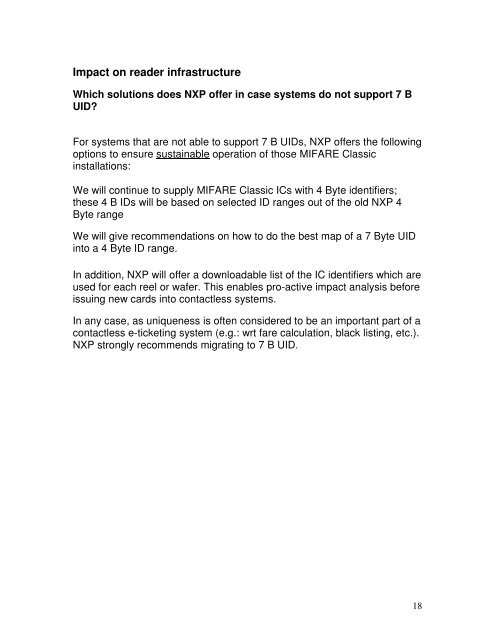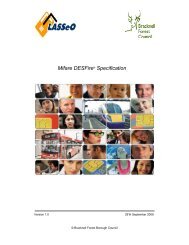4 Byte and 7 Byte UID offering for MIFARE Classic™, MIFARE Plus ...
4 Byte and 7 Byte UID offering for MIFARE Classic™, MIFARE Plus ...
4 Byte and 7 Byte UID offering for MIFARE Classic™, MIFARE Plus ...
Create successful ePaper yourself
Turn your PDF publications into a flip-book with our unique Google optimized e-Paper software.
Impact on reader infrastructure<br />
Which solutions does NXP offer in case systems do not support 7 B<br />
<strong>UID</strong>?<br />
For systems that are not able to support 7 B <strong>UID</strong>s, NXP offers the following<br />
options to ensure sustainable operation of those <strong>MIFARE</strong> Classic<br />
installations:<br />
We will continue to supply <strong>MIFARE</strong> Classic ICs with 4 <strong>Byte</strong> identifiers;<br />
these 4 B IDs will be based on selected ID ranges out of the old NXP 4<br />
<strong>Byte</strong> range<br />
We will give recommendations on how to do the best map of a 7 <strong>Byte</strong> <strong>UID</strong><br />
into a 4 <strong>Byte</strong> ID range.<br />
In addition, NXP will offer a downloadable list of the IC identifiers which are<br />
used <strong>for</strong> each reel or wafer. This enables pro-active impact analysis be<strong>for</strong>e<br />
issuing new cards into contactless systems.<br />
In any case, as uniqueness is often considered to be an important part of a<br />
contactless e-ticketing system (e.g.: wrt fare calculation, black listing, etc.).<br />
NXP strongly recommends migrating to 7 B <strong>UID</strong>.<br />
18









